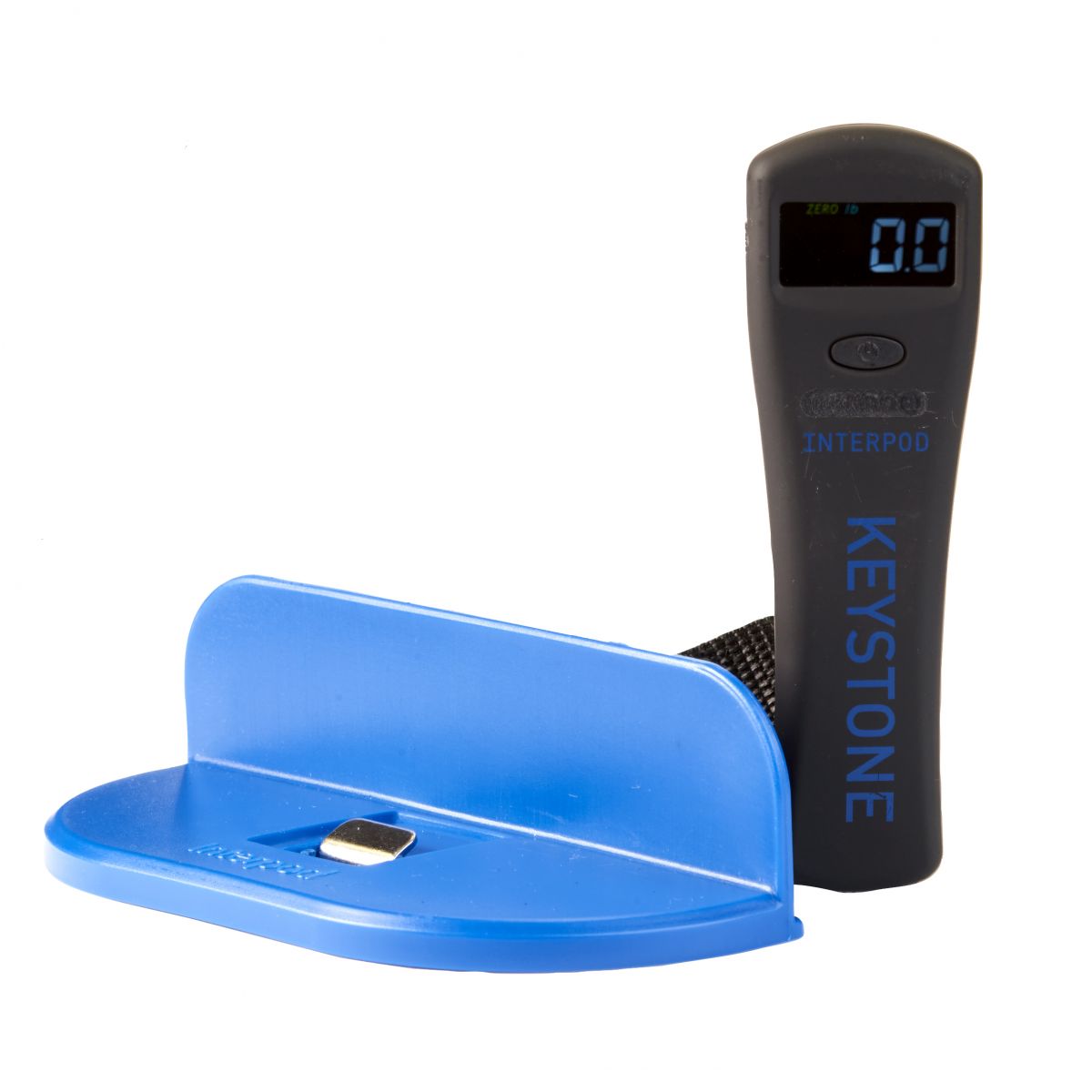A Supination Resistance Measuring Device that assists the practitioner to determine that amount of support or arch height needed in an orthotic to reduce patient symptoms.
The Keystone device is the first commercially available device for clinicians to quantify the supination resistance value so they can make better clinical decisions and better communicate with other clinicians.

USING THE KEYSTONE
With the person standing in their normal angle and base of gait, the strap is placed under the talonavicular joint. To maintain consistent measurements keep the strap vertical and perpendicular to the ground.
Before taking the measurement let the patient know what you’re about to do. Ask the patient to indicate when they feel the first toe and ball of foot beginning to lift from the ground. This is done simultaneously as you observe the first toe and medial column beginning to lift. The two observations should coincide.
Once this point is reached maintain that force for 3 seconds until the Keystone ‘beeps’ and the measurement taken. Record this measurement.
Push the power button to reset the Keystone and repeat this process 3 times. Average these 3 recordings to get your measurement.
The Keystone device is calibrated to measure forces between 40 and 250 Newtons.
For clinical ease and practical use - this range is divided into three reading sections: LOW - MODERATE - HARD.
These three force ranges correspond to the arch height (synonymous with the amount of force required to supinate the foot) of the orthotic.
Simplify prescription objectively
A supination resistance assessment device used to help determine the minimal effective level of orthotic support needed to reduce patient symptoms.
Evaluating the level of orthotic support is key to successful outcomes.
Remove the guesswork
Visual Assessment using the Foot Posture Index and checking for ‘overpronation’ are not indicative of injury causing factors. Forces, loads and stress placed upon tissues are the current accepted parameters to be assessed when prescribing orthotics.
Objective practice
The Keystone provides objective readings, use these readings to help determine the level of orthotic support required to alleviate patient symptoms.
Use technology to communicate with others
Compare results and discuss patients with other practitioners using objective measurements.
Keystone and supination resistance
The amount of force required to supinate the foot is weakly related to how pronated it is. The amount of force required to supinate the foot is highly correlated to the subtalar joint axis position. Body weight explains about a third of the force required to supinate the foot.
Instructions on how to use are supplied with each device.
Battery included CR2032 3V